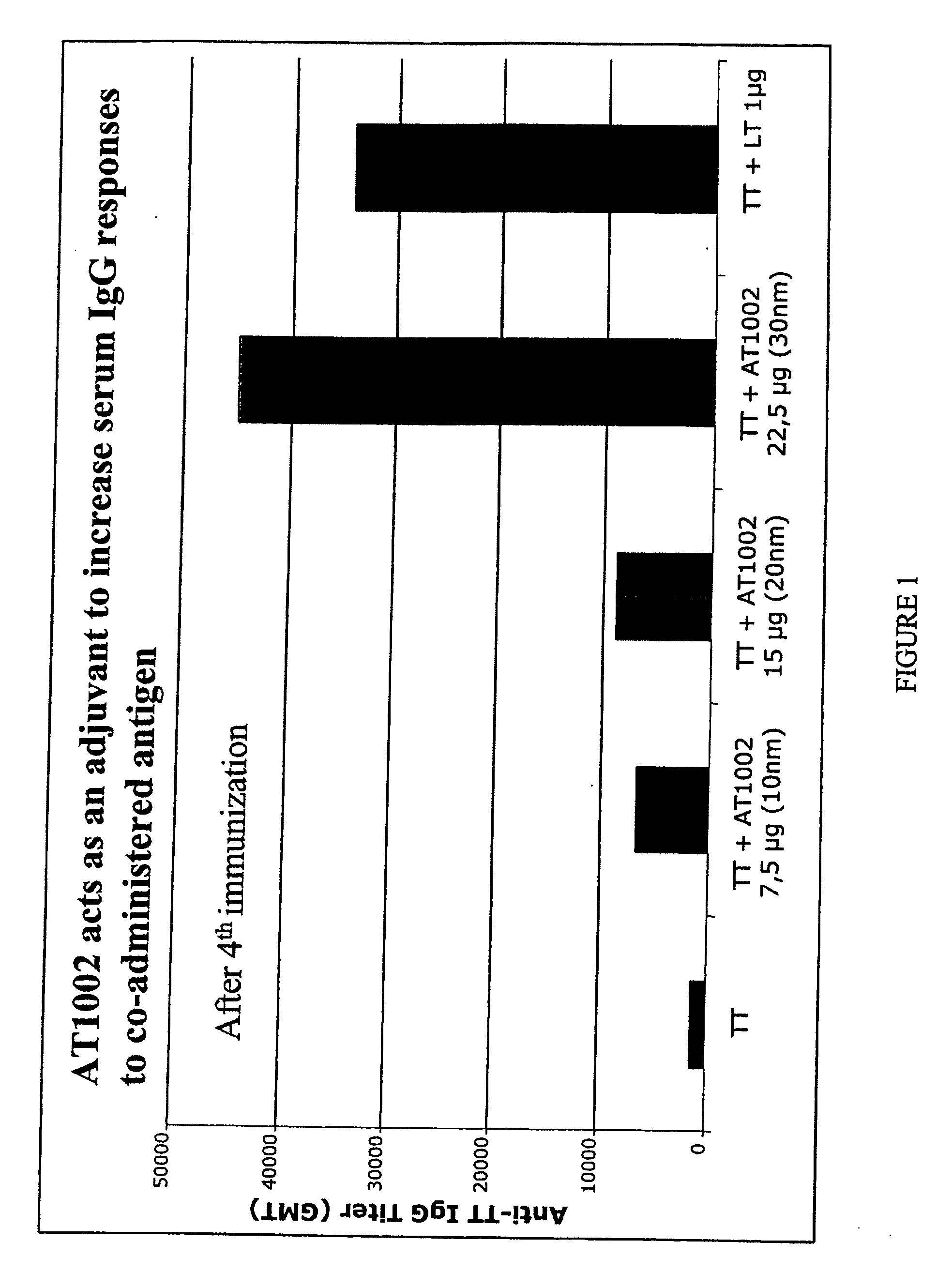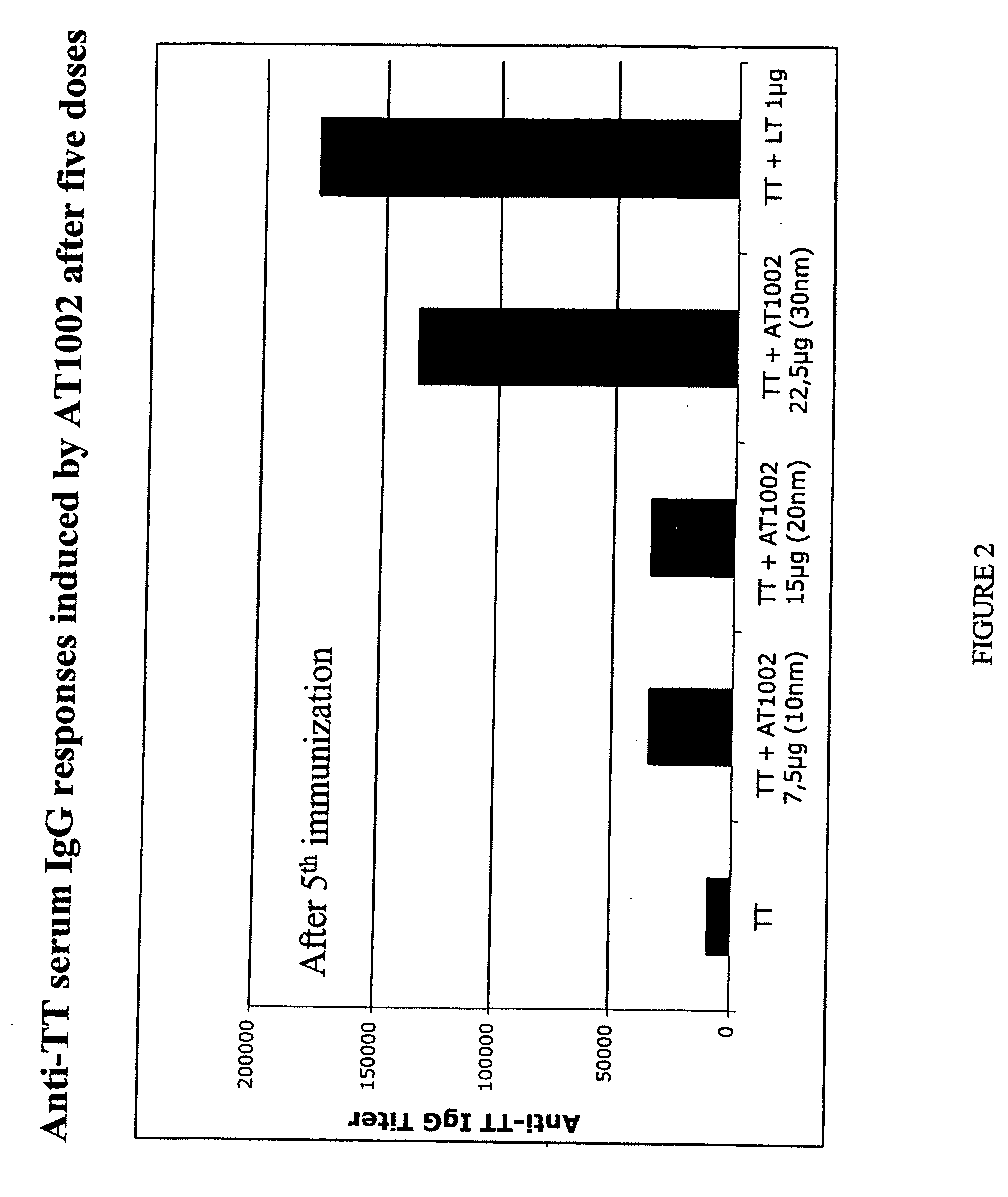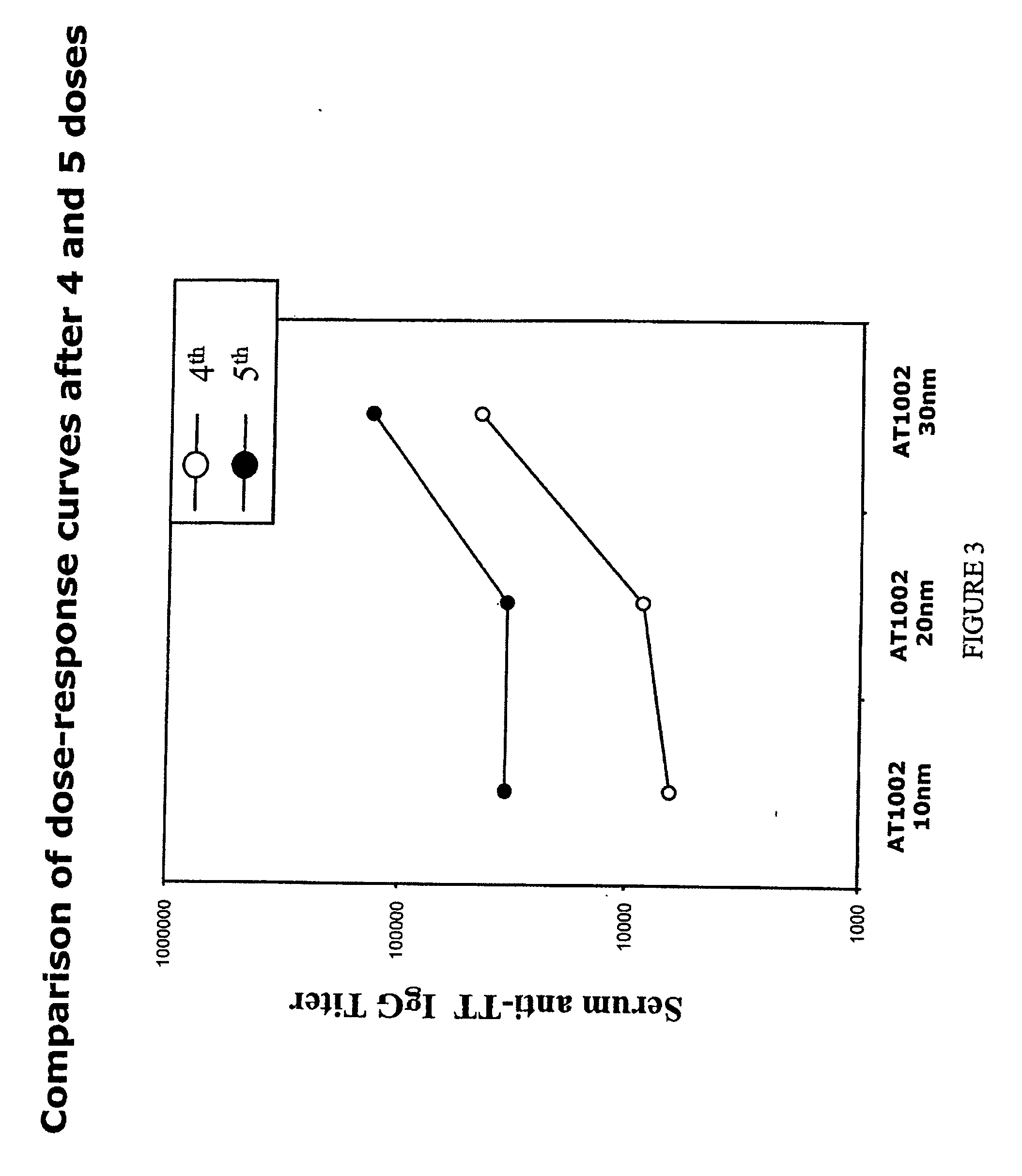Peptides for delivery of mucosal vaccines
a technology of mucosal vaccine and peptide, which is applied in the field of vaccines and immunotherapy, can solve the problems of inability to use freund's adjuvant in humans, inability to elicit a sufficient antibody response to confer immunity, and peptide and carbohydrate antigens
- Summary
- Abstract
- Description
- Claims
- Application Information
AI Technical Summary
Benefits of technology
Problems solved by technology
Method used
Image
Examples
example 1
[0073] Intranasal Immunization with Tetanus Toxoid (TT) and ZOT Peptide (AT1002)
[0074] Groups of four C57BL / 6 female mice were intranasally immunized with Tetanus Toxoid (TT) 2.5 μg alone or with TT plus AT1002 at the dose indicated or with TT plus the known adjuvant heat-labile enterotoxin (LT) as a control.
[0075]FIG. 1 shows the geometric mean titers of anti-TT serum IgG after four immunizations. The results show that AT1002 acts as an adjuvant in that it elicits serum responses to TT higher as compared to those of animals immunized with TT alone. Furthermore, the results show that the AT1002 dose of 30 nanomoles is relatively most effective.
[0076]FIG. 2 shows the geometric mean titers of anti-TT serum IgG after four immunizations. These results show that the anti-TT serum responses elicited by AT1002 are higher than those observed after four doses. Again the AT1002 dose of 30 nanomoles is the relatively most effective.
[0077] Serum anti-TT IgA responses were determined to be i...
example 2
[0080] ZOT Peptide as a Mucosal Adjuvant
[0081] The results presented herein demonstrate peptide AT1002 acts as a mucosal adjuvant. More specifically, upon mucosal immunization of a mammal, the co-administration of AT1002 induces serum IgG, IgA in the serum and mucosal IgA in vaginal secretions.
example 3
[0082] AT1002 Induces Protective Responses to the Co-Delivered Antigen.
[0083] Mice (C57BL / 6) received four weekly intranasal doses of Tetanus toxoid (TT; 1 μg / dose) with or without AT1002 (30 μg / dose) and 2 months later the mice were challenged subcutaneously with DP50 (50 times the dose paralyzing 50% of the animals, as established in preliminary experiments) of tetanus toxin and paralysis and death were monitored for one week. The results in Table 1 show that the mice immunized with TT alone were not protected whereas the mice that received the antigen with AT1002 were all protected. Furthermore, the serum IgG titers specific for the antigen were analyzed in individual mice immediately before the challenge. The range of the titers measured is reported in the Table.
TABLE 1Survival of intranasally immunized mice to Tetanus Toxin challengeVaccineNo. of survivors / No. of micerange of anti-TT IgG titerTT alone0 / 7 256-4,096TT + AT10028 / 816,384-65,536
[0084] These results demonstrate t...
PUM
| Property | Measurement | Unit |
|---|---|---|
| Concentration | aaaaa | aaaaa |
| Concentration | aaaaa | aaaaa |
| Immunogenicity | aaaaa | aaaaa |
Abstract
Description
Claims
Application Information
 Login to View More
Login to View More - R&D
- Intellectual Property
- Life Sciences
- Materials
- Tech Scout
- Unparalleled Data Quality
- Higher Quality Content
- 60% Fewer Hallucinations
Browse by: Latest US Patents, China's latest patents, Technical Efficacy Thesaurus, Application Domain, Technology Topic, Popular Technical Reports.
© 2025 PatSnap. All rights reserved.Legal|Privacy policy|Modern Slavery Act Transparency Statement|Sitemap|About US| Contact US: help@patsnap.com



